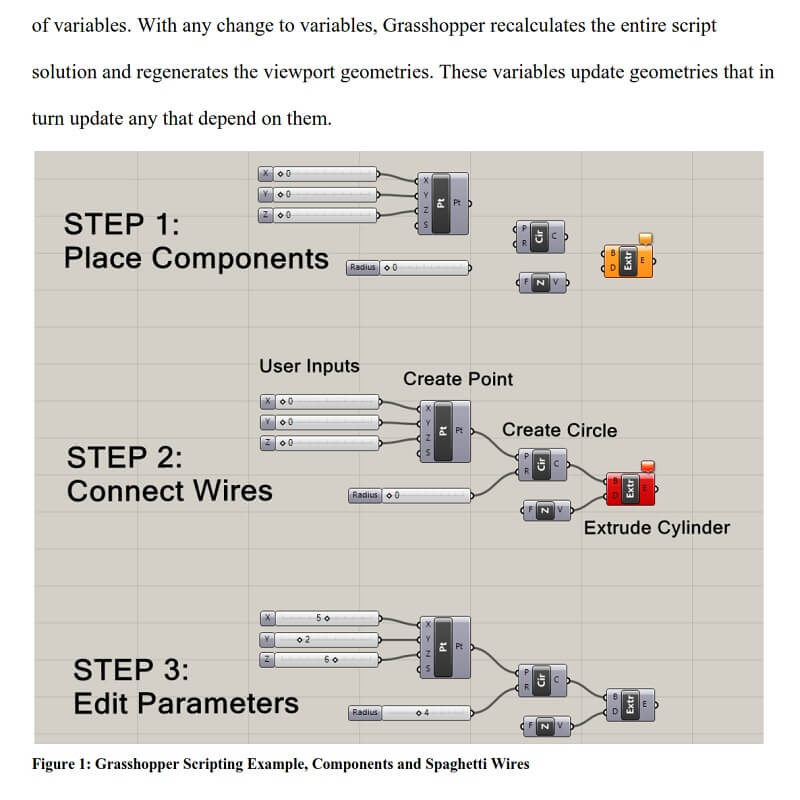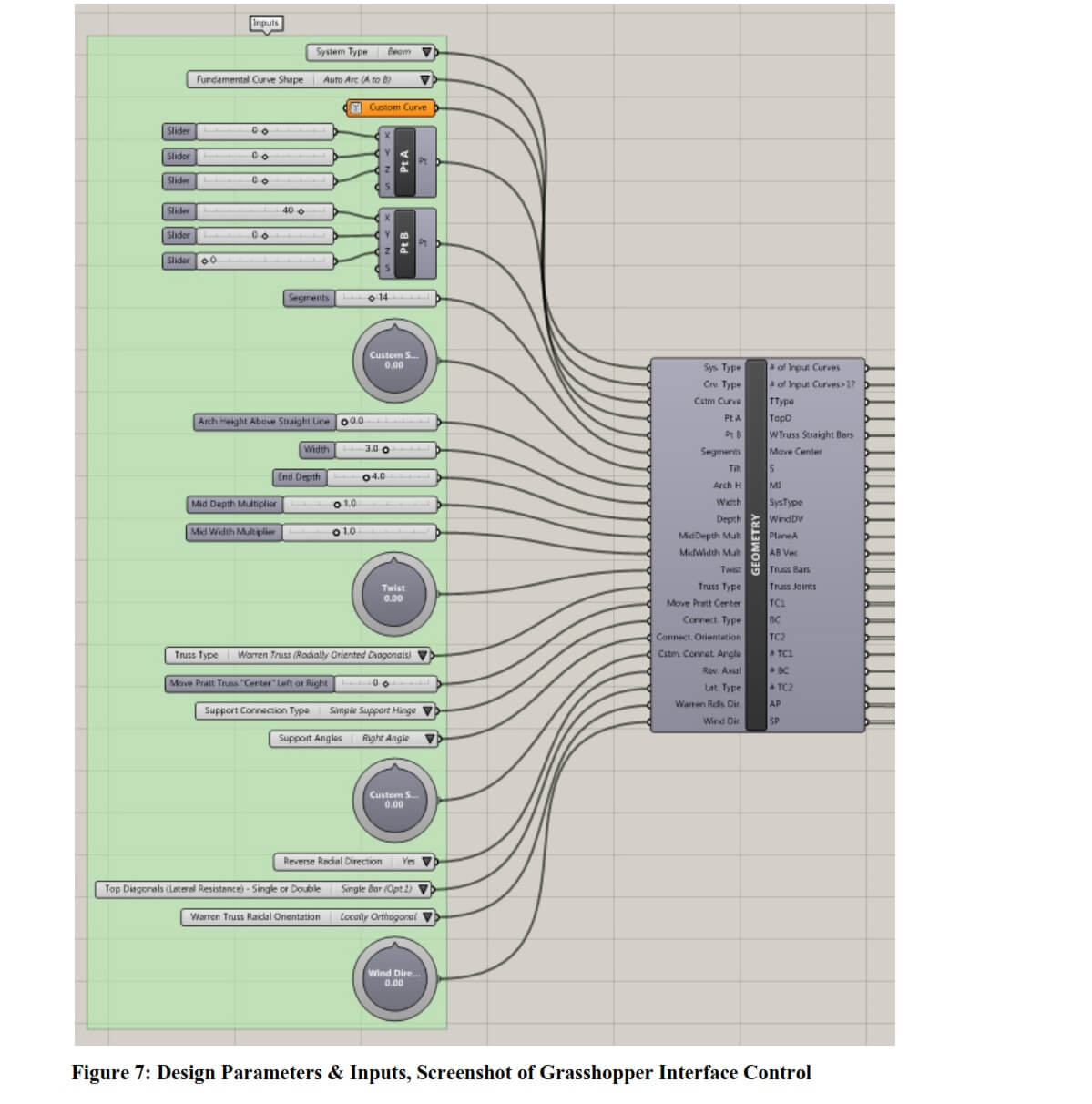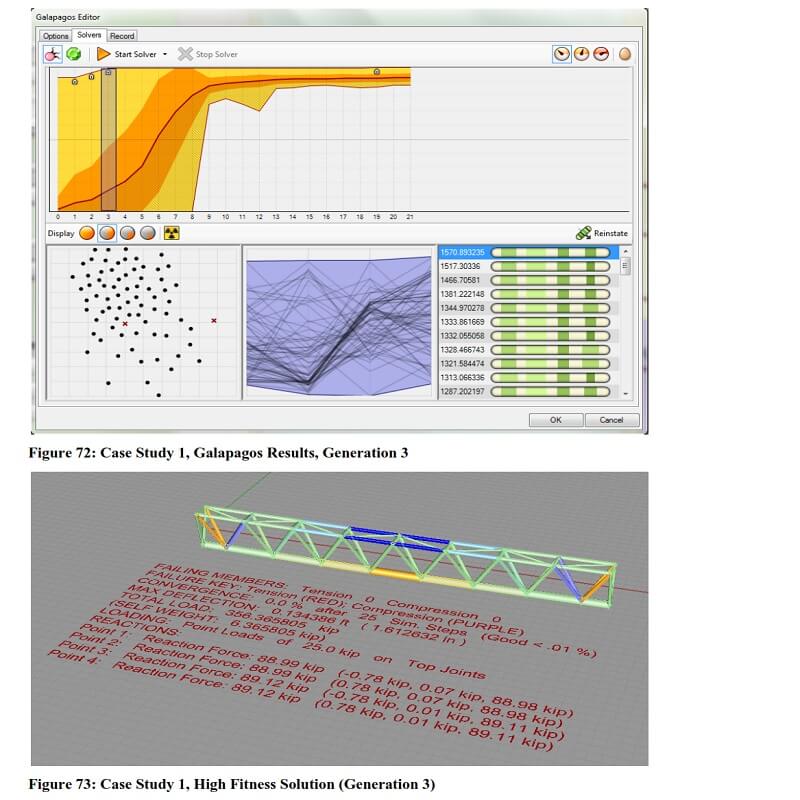Building Elements
Structural Design Tool for Performative Building Elements:
A Semi-Automated Grasshopper Plugin for Design Decision Support of Complex Trusses
Michael Patrick Makris
A Thesis Presented to the
FACULTY OF THE USC SCHOOL OF ARCHITECTUREUNIVERSITY OF SOUTHERN CALIFORNIA
In Partial Fulfillment of the Requirements for the Degree
MASTER OF BUILDING SCIENCE

This thesis by Michael Patrick Makris, describes the development, testing, and findings of a Rhino-Grasshopper toolset developed to encourage real-time parametric design form experimentation through immediate integrated structural analysis feedback, allowing for structural optimization through iterative formal experimentation.
 The performance-driven design toolset is a series of automated components that create geometry and simulate, analyze, and optimize triangular prismatic trusses in real-time for two main structural loading types: gravity and wind.
The performance-driven design toolset is a series of automated components that create geometry and simulate, analyze, and optimize triangular prismatic trusses in real-time for two main structural loading types: gravity and wind.
 Each element is constructed, loaded, and simulated within the Rhino-Grasshopper design interface, returning structural performance information infographically in a native design environment. An optimization-assist tool is included that provides designer-centric information about proposed truss solutions such as cost, weight, deflection, and truss complexity.
Each element is constructed, loaded, and simulated within the Rhino-Grasshopper design interface, returning structural performance information infographically in a native design environment. An optimization-assist tool is included that provides designer-centric information about proposed truss solutions such as cost, weight, deflection, and truss complexity.
 In a series of trials of increasing design complexity, the toolset is tested and its accuracy is verified against benchmark structural engineering industry software SAP2000.
In a series of trials of increasing design complexity, the toolset is tested and its accuracy is verified against benchmark structural engineering industry software SAP2000.
 This thesis argues that, equipped with immediate structural performance information, designers can iteratively improve their architectural form and better understand the impact of form on structural performance, while still in conceptual design. Architects will produce more efficient, structurally informed designs when using this toolset over traditional conceptual design tools.
This thesis argues that, equipped with immediate structural performance information, designers can iteratively improve their architectural form and better understand the impact of form on structural performance, while still in conceptual design. Architects will produce more efficient, structurally informed designs when using this toolset over traditional conceptual design tools.































Comments